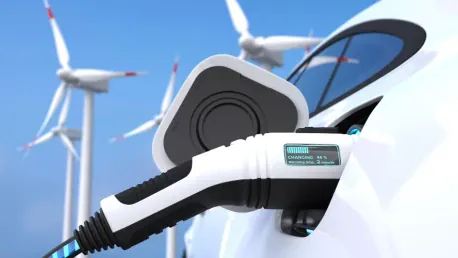In a remarkable stride towards sustainability, the European Union (EU) is allocating €422 million through the Alternative Fuels Infrastructure Facility (AFIF) to enhance the infrastructure for alternative fuels, focusing on air, maritime, and road transport. This significant investment, which is an integral part of the EU’s larger vision for environmental sustainability, is aimed primarily at expanding electric vehicle (EV) and hydrogen refueling stations in urban areas. This strategic focus on sustainable urban mobility is essential to advance the EU’s long-term environmental targets. Among the 39 funded projects, there are notable initiatives designed to facilitate the creation of a comprehensive and accessible network of charging and fueling stations across various European regions.
Spanning the Central-Eastern European Horizon
One of the key regions benefiting from this initiative is Central-Eastern Europe, where numerous countries are set to see substantial infrastructure improvements. Among these projects is Drive-E Cohesion, which seeks to establish 708 charging points for light-duty electric vehicles (eLDVs) and 126 for heavy-duty electric vehicles (eHDVs) across Czechia, Hungary, Romania, Bulgaria, Slovakia, and Poland, all strategically placed along the Trans-European Transport Network (TEN-T). Another significant project, BlueRoute 3E, coordinated by PPC Blue Romania, plans to create 60 high-power DC charging points in Romania and Greece, further enhancing the connectivity and convenience for EV owners.
Additional initiatives also include Croatia’s e-volve COEN, headed by Electrip Mobility Service, which aims to install 53 multi-point charging stations in Bulgaria, Croatia, and Poland. This concerted effort is further exemplified by Hungary’s MVMULTRA2024 project, which intends to add 67 recharging points across 30 prime locations, ensuring widespread accessibility. Fully embracing this movement, Axionet IoT’s X-RoCharge project in Romania will set up 200 recharging pools with a total of 496 charging points.
Baltic States Lead the Charge
The Baltic States are particularly proactive in their pursuit of green energy infrastructure. Estonia, under the auspices of Eesti Energia’s ECO 3 project, is set to create 200 fast-charging points across Estonia, Latvia, Lithuania, and Poland. In Latvia, Latvenergo’s Elektrum Drive 2 initiative is making strides by deploying 130 recharging points, all powered by renewable electricity, competitively positioning the Baltic states as key players in sustainable energy adoption. Furthermore, Ignitis ON-EV in Lithuania aims to install 500 recharging points along the extensive TEN-T Network within Estonia, Latvia, and Lithuania.
These endeavors not only bolster the region’s EV infrastructure but also play a pivotal role in harmonizing efforts towards achieving the European Green Deal. This cohesive and comprehensive approach underscores a significant shift towards sustainable, interconnected mobility across Europe.
Paving the Way for a Greener Future
In a remarkable move towards sustainability, the European Union (EU) is committing €422 million through the Alternative Fuels Infrastructure Facility (AFIF) to bolster infrastructure for alternative fuels, with a special focus on air, maritime, and road transport. This major investment is a crucial element of the EU’s broader environmental sustainability vision, primarily aimed at expanding electric vehicle (EV) and hydrogen refueling stations in urban areas. This strategic concentration on sustainable urban mobility is key to advancing the EU’s long-term environmental objectives. Among the 39 funded projects, there are significant initiatives aimed at creating a widespread and accessible network of charging and fueling stations across various European regions. The goal is to ensure that these stations are readily available, thereby encouraging the use of alternative fuels and reducing the carbon footprint of transportation within the EU.









